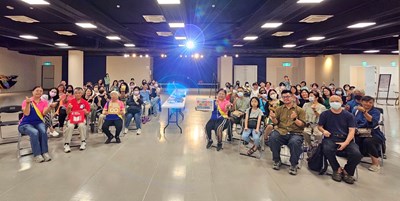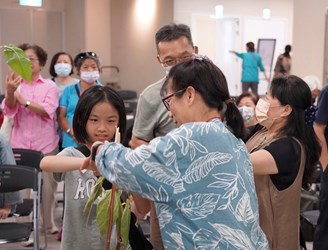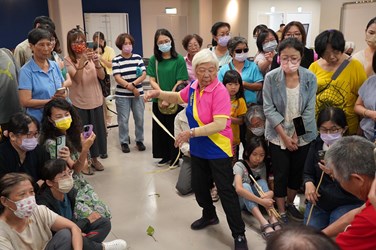
Jute may seem ordinary, but it is as valuable as gold! The Cultural Affairs Bureau of Taichung City Government held the "Badland Cultural Creativity-Revival of Jute Weaving Craftsmanship in Chongde Community, Tianliao Township, Kaohsiung" yesterday (13th) at the Fiber Craft Museum "Revitalization Experience Sharing" symposium, community chairman Huang Xiumei and Tainan University of Technology teacher Zhang Mingji shared their experiences. Community experts Wang Chaofu and Chen Dinghao also demonstrated the process of jute peeling and fiber extraction, allowing the participants to see the transformation of jute into The process of "golden fiber" also re-understands the value of jute.
According to the Cultural Affairs Bureau, jute fiber has high strength, good water resistance and low price. After fiber extraction, the jute fiber will oxidize from silvery white to yellowish brown, giving it a silky luster, hence it is known as the "golden fiber". Central Taiwan was once one of the major jute-producing areas. In 1905, the "Taiwan Hemp Manufacturing Co., Ltd." was established in Fengyuan to produce linen, linen silk, sacks, canvas, tents, luggage bags, mattresses, etc. Later, with the development of the plastic industry And gradually declined. At present, there are only a few edible jute plants, and the young leaves can be used to cook a unique heat-relieving jute soup. In recent years, the Chongde Community in Tianliao Township, Kaohsiung, has worked hard to promote jute restoration, not only passing on precious traditional skills, but also developing diversified creative products. The successful experience is worth learning from.
"It is very rare for a plant to come back to life after disappearing from the land for nearly a month, but our red jute restoration has done it!" said Chairman Huang Xiumei. Tianliao Township Chongde Community is located in North Kaohsiung. At the border of the world, the land is poor, but it is an important production area of drought-resistant red jute. In the past, every household would sow seeds around the Qingming Festival. After harvesting before the Mid-Autumn Festival, the hemp silk would be peeled, fibered, and twisted in the sun. It can be made into twine, linen bags, etc. Later, the jute industry gradually declined, and the traditional skills were also faced with being lost. In recent years, with the support of the Committee of Agriculture and the Ministry of Labor’s empowerment program, we have been actively reviving jute and preserving skills. Under the guidance of teacher Zhang Mingji, we have used high-tech textiles to develop diversified products to promote the revitalization of local industries and the cultivation of talents.
At yesterday's event, jute experts Wang Chaofu and Chen Dinghao from Chongde Community demonstrated the process of peeling and extracting jute. The two elders recalled the hardships of rural life in the early years. Jute was an indispensable and precious material for daily life and an important source of sideline income. In addition to being made into bags, fishing nets, ropes, etc., it was also used as medicinal materials, fuel, toys, and even rural toilet paper. "Shit grate" material. Whenever jute is harvested, neighbors compete to help support the family, allowing the neighbors to maintain close interpersonal networks and social relationships.
The Cultural Affairs Bureau explained that the Fiber Craft Museum is currently exhibiting the "Loom Trilogy (2) High-Weaving Fabrics Exploration Exhibition", which introduces Taiwan's export rush industry, indigenous contemporary fabrics, and plants developed using high-looms from 1970 to the present. The experimental results of fiber fabric design, a piece of hand-woven children's educational fabrics and jute re-cultured fabrics from Chongde Community in Tianliao Township, Kaohsiung. At the same time, a "Green Field Fiber Plaza" was set up outdoors for the public to learn about green edible jute and red fiber jute. . There will also be a "Houndstooth Pattern Knitting Handmade Activity" on August 10 (Saturday). The public is welcome to appreciate the timeless charm of the Houndstooth Pattern. Related event information and online registration can be found on the official website of the Fiber Museum ( https://mofia.taichung.gov.tw/) or fan page (https://www.facebook.com/mofiaichung) for inquiries.

 Facebook
Facebook
 Twitter
Twitter
 LINE
LINE


